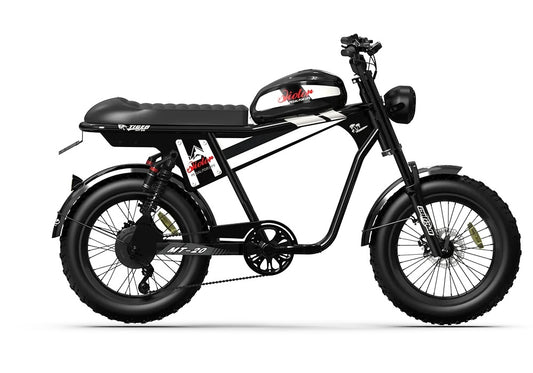Collection: E-Bikes
Electric bicycles, or e-bikes, are bicycles equipped with a battery-powered electric motor that assists the rider in pedaling. They offer an additional boost of power, making it easier to tackle hills, carry loads, or travel longer distances. E-bikes still require the rider to pedal, but the motor provides extra assistance, making riding more manageable.
Here's a more detailed look at what e-bikes are and how they work:
Key Features:
-
Motor: A motor, typically located in the wheel hub or mid-drive area, provides the electric assist.
-
Battery: A rechargeable battery powers the motor.
-
Controller: This component regulates the power output from the motor.
-
Pedal Assist: E-bikes are designed to assist with pedaling, not replace it entirely.
How E-bikes Work:
- The rider pedals, activating sensors that detect the amount of effort.
- The sensors send a signal to the controller, which then adjusts the power output from the motor.
- The motor provides additional power, making it easier to pedal.
- The rider can choose different levels of assistance, balancing power and battery life.
Benefits of E-bikes:
-
Easier Riding: E-bikes make hills and headwinds more manageable.
-
Longer Distances: Riders can travel further without tiring.
-
Increased Accessibility: E-bikes can be beneficial for riders with physical limitations or disabilities.
-
Versatility: E-bikes come in various styles, including cargo bikes, commuter bikes, and mountain bikes.
Types of E-bikes:
-
Pedelecs: Pedal-assist only, no throttle, and capped at 20 mph.
-
Throttle-Assisted: Can be ridden without pedaling, also capped at 20 mph.
-
Speed Pedelecs: Pedal-assist with or without throttle, and can reach higher speeds, up to 28 mph.



